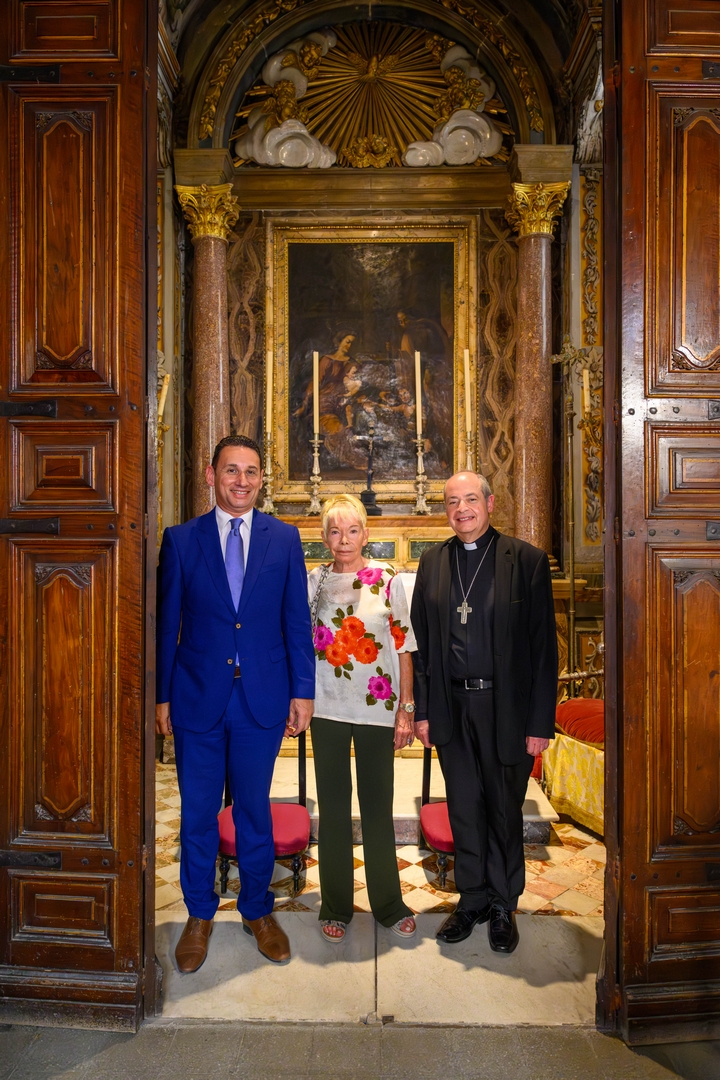The historic 18th-century Chapel of St Joseph, housed within the Archbishop’s Palace in Valletta, is set to undergo much-needed conservation thanks to a generous donation by Madame Marie Amèlie Gleizes Dewavrin.
The donation was formalised through an agreement signed recently by Archdiocese of Malta Administrative Secretary Michael Pace Ross and Madame Gleizes Dewavrin at the Archbishop’s Palace, in the presence of Auxiliary Bishop Joseph Galea Curmi.

Photo: Archdiocese of Malta – Ian Noel Pace
The donation will fund the conservation and restoration of the chapel, including the installation of new lighting. The project is expected to be completed by autumn 2026.
On the occasion, Madame Gleizes Dewavrin stated that “it is our shared responsibility to safeguard the cultural treasures that tell the story of our intertwined histories,’ underlining her commitment to preserving Malta’s rich cultural heritage and to reinforcing the historic ties between France and Malta, that have shaped the islands’ heritage.
Mr Pace Ross thanked Madame Gleizes Dewavrin, observing that “the conservation of the Chapel of St Joseph marks another important step in the ongoing preservation of the Archbishop’s Palace. Madame Gleizes Dewavrin’s generous donation will ensure that this ecclesiastical space will continue to fulfil its spiritual purpose within the palace.”
Situated prominently on the piano nobile, the Chapel of St Joseph has been preserved in its authentic 18th-century form, as refurbished by Bishop Paul Alphéran de Bussan, whose coat of arms is still visible on the chapel’s ceiling. The altar painting portrays the Holy Family, with St Joseph shown as guardian of the Virgin Mary and the Child Jesus, accompanied by the young St John the Baptist.
The chapel features a rich array of artistic and architectural elements, including oil paintings, gilt woodwork, marble cladding, polychrome marble flooring, and original leaded glass panels in its 18th-century door. Each of these elements requires specialised conservation techniques, making this project a significant contribution to the Church’s broader efforts to preserve its religious and cultural heritage.
As one of Valletta’s Renaissance landmarks, the Archbishop’s Palace in Valletta has long served as both the seat of the Archdiocese and the Bishop’s residence. The piano nobile, with its grand halls and chapel, was historically reserved for ceremonial and ecclesiastical use, a tradition that continues today.





